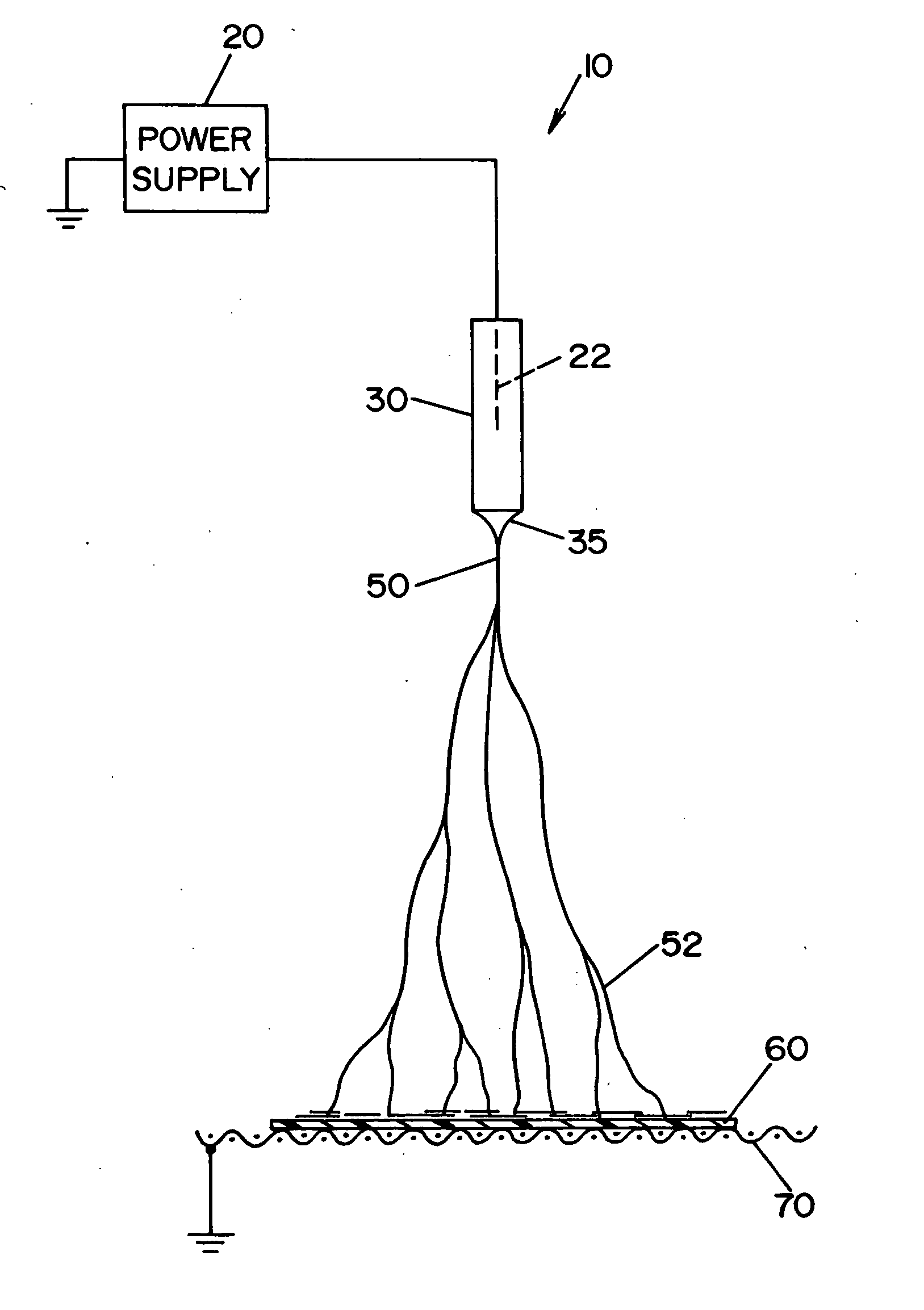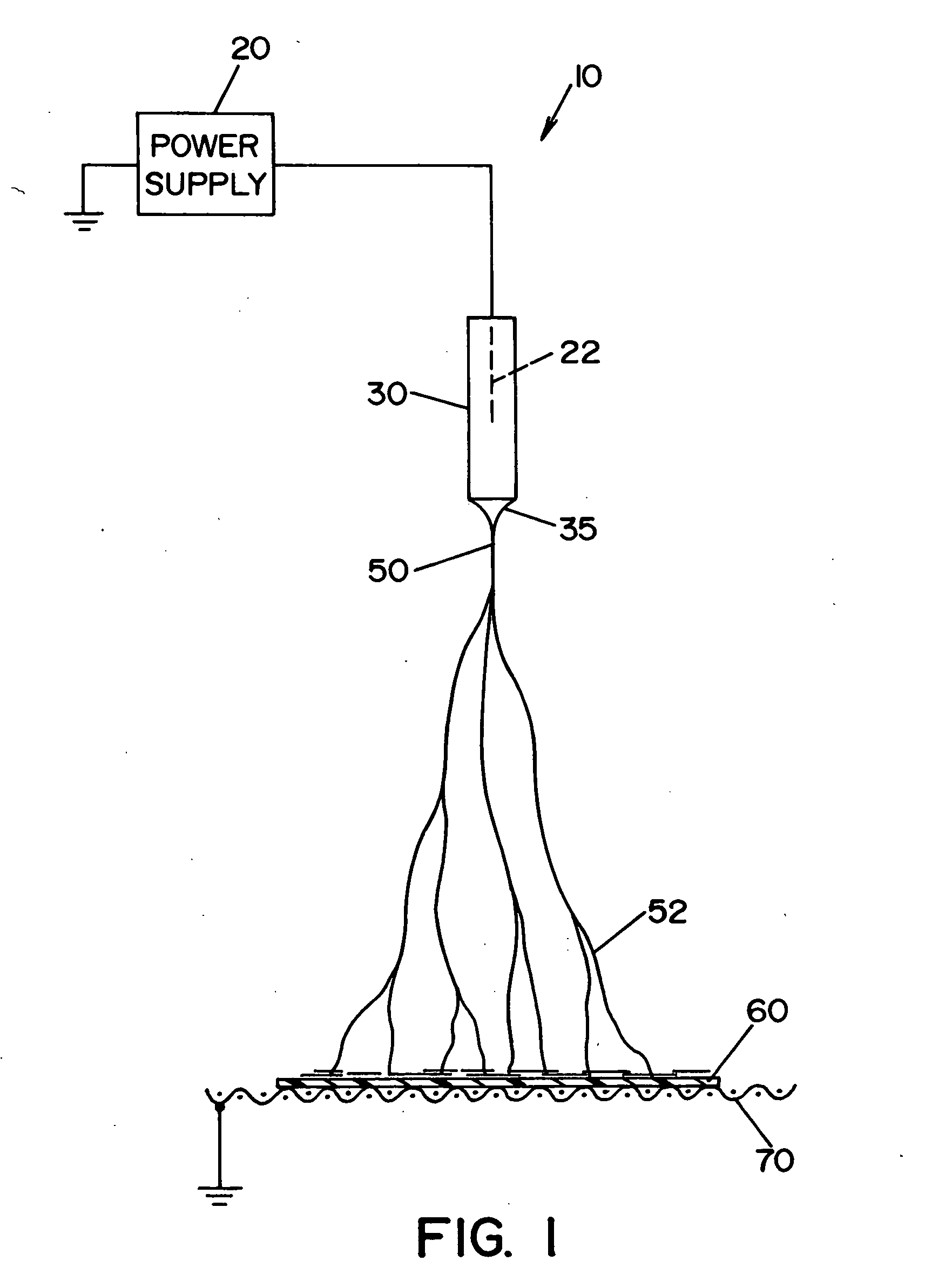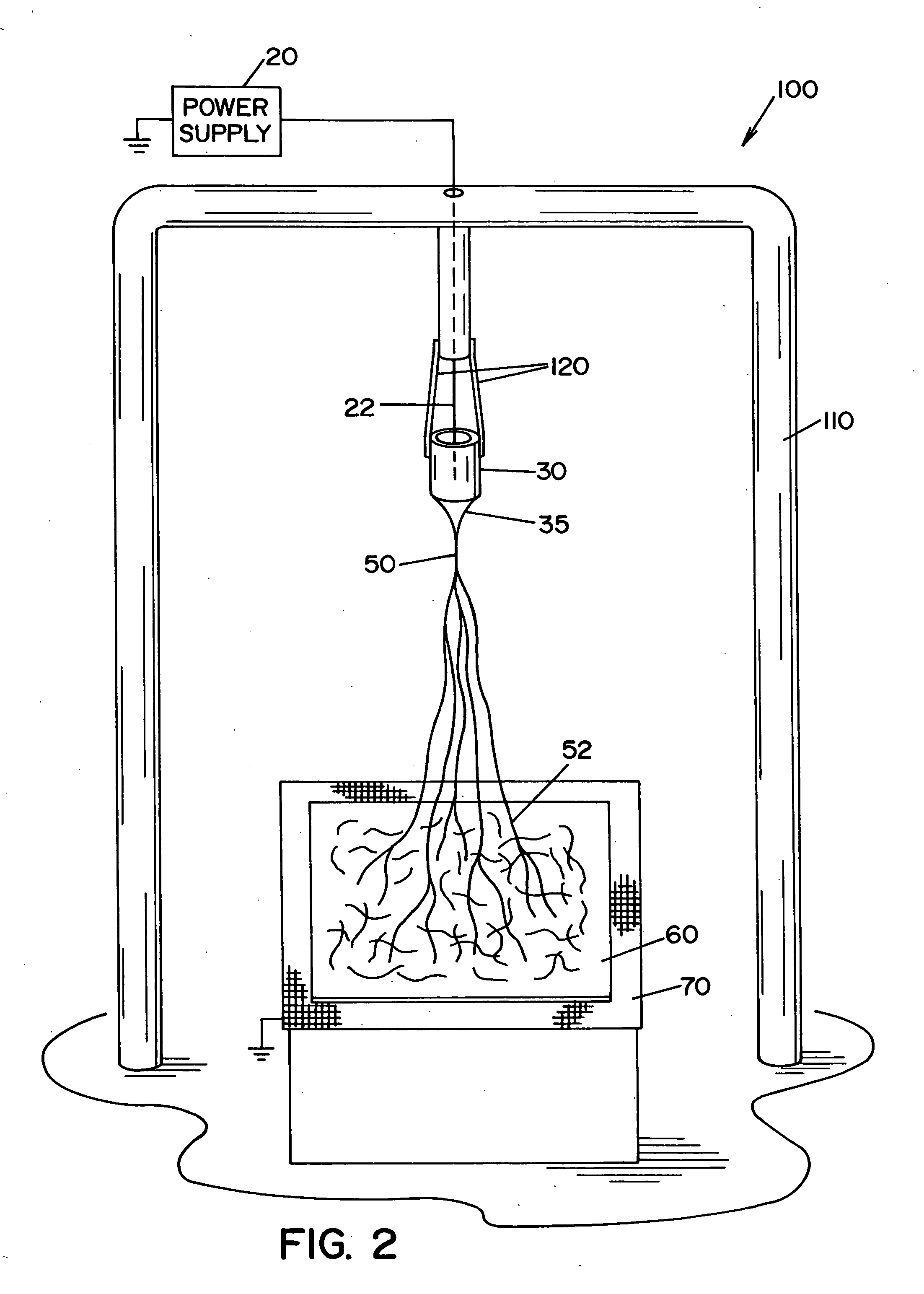Indicator device having an active agent encapsulated in an electrospun nanofiber
an electrospun nanofiber and active agent technology, applied in the direction of positive displacement liquid engine, laboratory glassware, instruments, etc., can solve the problems of reducing the sensitivity of indicators, affecting the treatment effect of items, and re-contaminating the item being treated by separated active agents, so as to prevent the separation of active agents
- Summary
- Abstract
- Description
- Claims
- Application Information
AI Technical Summary
Benefits of technology
Problems solved by technology
Method used
Image
Examples
example 1
Biological Indicator
[0049]
EncapsulationPolyurethane 67% Tecoflex and aComponentwater soluble polymer (33% Pluronic acid)Solvent: Tetrahydrofuran (THF)Active AgentSpore Bacillus stearothermophilusATCC 12980Carrier SubstratePolymer Mat
[0050] In Example 1, a nanofiber biological indicator (BI) was produced using the electrospinning process described above to compare the level of wash-off against commercially available paper impregnated BI's. These BI's typically lose approximately 50% of the indicator organism solely due to mechanical action of water in automated liquid systems. In this regard, spores were incorporated into a polymer blend of polyurethane and a water soluble polymer. The nanofiber BI was sectioned and cut into two 3 cm2 samples containing approximately 2.35×107 (7.37 log10) colony forming units (CFU) Bacillus stearothermophilus ATCC 12980 per sample. To simulate the process conditions that can cause wash-off in liquid-based automated reprocessing systems, the impact o...
example 2
Chemical Indicator
[0052]
EncapsulationPolyurethane TecoflexComponentSolvent: Tetrahydrofuran (THF)Active AgentColor changing chemical: 0.16% crystal violetCarrier SubstratePolymer Mat
[0053] The chemical indicator (CI) includes a color changing chemical (i.e., crystal violet) that is sensitive to oxidizing chemistry, such that upon oxidation with an antimicrobial treatment chemical (i.e., STERIS 20 sterilant), comprised of 0.2% peracetic acid (PAA) in a builder package containing buffers, anticorrosives, and chelating agents will cause a color change. The baseline color of the CI is deep purple, and changes to a white color in the presence of >1500 mg / L of the sterilant STERIS 20.
[0054] It should be appreciated that other dyes / pigments can be encapsulated in the encapsulation component to verify other parameters of the antimicrobial treatment process, including, but not limited to, time and temperature.
example 3
Cleaning Indicator
[0055]
EncapsulationPolyurethane 67% Tecoflex andComponenta water soluble polymer (33% pluronic acid)Solvent: Tetrahydrofuran (THF)Active AgentColor changing chemical: 7% blue inkCarrier SubstrateStainless steel coupon
[0056] The cleaning indicator (CnI) of Example 3 is used to test the efficacy of a cleaning agent of an automated cleaning system that penetrates and removes soil, debris and contaminants using a high pressure spray. In Example 3, the CnI converted from a baseline yellow color to a deep blue color upon contact with water for 30 seconds.
PUM
| Property | Measurement | Unit |
|---|---|---|
| Solubility (mass) | aaaaa | aaaaa |
| Antimicrobial properties | aaaaa | aaaaa |
| Colorimetric evaluation | aaaaa | aaaaa |
Abstract
Description
Claims
Application Information
 Login to View More
Login to View More - R&D
- Intellectual Property
- Life Sciences
- Materials
- Tech Scout
- Unparalleled Data Quality
- Higher Quality Content
- 60% Fewer Hallucinations
Browse by: Latest US Patents, China's latest patents, Technical Efficacy Thesaurus, Application Domain, Technology Topic, Popular Technical Reports.
© 2025 PatSnap. All rights reserved.Legal|Privacy policy|Modern Slavery Act Transparency Statement|Sitemap|About US| Contact US: help@patsnap.com



